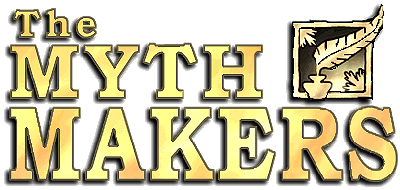Through our institutions and groups, we are continually creating new myths and redefining existing ones in the search for identity.
Numerous artists in every field have created works that clarify and express some aspects of Canadian identity.
Some have brought to life fictional characters that embody the hopes and dreams of a particular group. In spite of Canadians' legendary reluctance to warm up to fictional characters, there are many well-loved favourites.
T.C. Haliburton's Sam Slick was the subject of a collection of stories that became the first Canadian international bestseller. The popularity of Lucy Maud Montgomery's Anne of Green Gables has never waned and Louis Hémon's Maria Chapdelaine, created after only a brief stay in Canada, has become synonymous with a way of life.
Some of our greatest mythmakers have themselves enjoyed wide recognition for their extraordinary contributions to our evolving self-consciousness. Sometimes their lives were so closely identified with their art that they too remain an essential part of Canadian self-identity.
Grey Owl became famous the world over for his interpretation of the wilderness he loved. He has been called the father of the modern conservation movement. His life, itself an elaborately constructed myth, was part of his art.
It was often the familiar lure of the wilderness that inspired an artist and evoked a responsive chord in us. For example, Pauline Johnson was widely acclaimed for her dramatic poetry readings. To her audiences, her verses seemed a magic key to the enchantment of the frontier and the Natives' understanding of it.
Emily Carr found artistic strength in what she felt was a vanishing way of life; her art became a record by which Canada remembers its western past. Tom Thomson, inspired by the wilderness, himself mysteriously disappeared into it. His death serves as a harsh reminder of Nature's power.
Interpreters of myth have also enriched our awareness of who we are. The ethnologist Marius Barbeau spent decades in the early years of the twentieth century collecting and retelling French-Canadian folklore.
By showing us the gap between societal myths and political realities, social critics like Nellie McClung force us to reshape our institutions and help bring new goals into focus.
Mythmaking is one of the vital signs of a society. Groups continually fashion myths and use them as mirrors in which they can discover or recognize aspects of their complex being. We all participate in the process of redefining ourselves whenever we remember the people and forces that have shaped our land.




